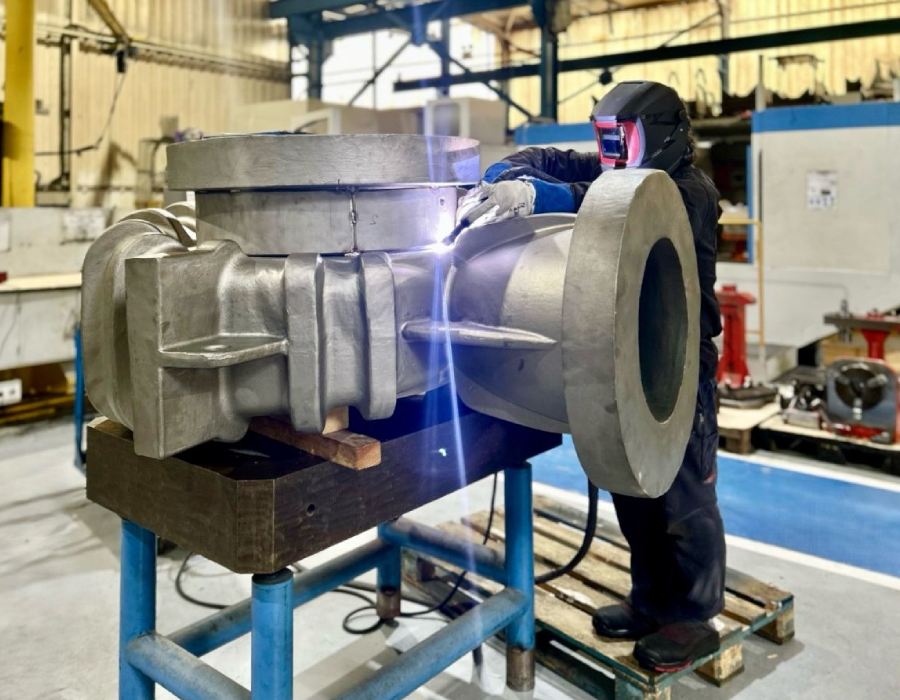Predictive maintenance services for industrial pumps and valves are the foundation for anticipating critical component failures, avoiding unplanned shutdowns and reducing hidden costs. At Asimer Group we combine high precision CNC machining, technical welding and specialized coatings to provide tailored solutions for each sector.
At Asimer Group, we witness this every day: valves that stop sealing properly, centrifugal pumps that begin to vibrate, or compressor components that degrade without any visible signs… until it’s too late.
In these cases, acting in time isn’t about luck—it’s about having a solid, data-driven strategy and access to advanced tools. Anticipating failure is what makes the difference. But to achieve this, not all providers are prepared: it requires analytical capabilities, technical resources, and precise execution.
In this article, we explain what predictive maintenance services you can hire, how to identify a provider with real intervention capabilities, and why trusting Asimer Group is a guarantee when operational reliability cannot afford mistakes.
👉 Do you have critical components at risk?Request a free evaluation now.
Predictive maintenance services for pumps and valves: what they are and why they are essential in the industry
Predictive maintenance services help anticipate possible failures before they occur by analyzing real-time data from your industrial assets.
Unlike scheduled maintenance, which is calendar-based, or reactive maintenance, which kicks in after a failure, predictive maintenance relies on objective indicators—such as vibrations, abnormal temperatures, or differential pressure—allowing intervention only when truly necessary.
At Asimer Group, we work with manufacturers of industrial pumps, cryogenic valves, and compressors in sectors where failure is not an option. Our experience shows that a predictive approach not only reduces unplanned downtimes, but also extends the lifespan of critical components and improves overall system performance.
How does it differ from other maintenance types?
- Corrective: Action is taken after failure. It’s costly, reactive, and highly disruptive.
- Preventive: Based on fixed intervals. It may lead to unnecessary interventions and avoidable costs.
- Predictive: Action is taken only when objective signs of deterioration appear, optimizing resources, reducing risks, and extending the lifespan of key equipment.
Applied technologies: CNC machining, welding and technical coatings in predictive maintenance
An effective predictive program is not just about monitoring indicators. It requires in-depth data analysis, technical interpretation, and the ability to intervene with precision when a critical deviation is detected.
At Asimer Group, we don’t just measure—we diagnose and act. We use advanced sensors, predictive models, and specialized technical interventions to ensure that failures are not only detected, but resolved surgically.
🛠 Technologies and services applied include:
- Vibration and ultrasonic analysis on butterfly valves, pump shafts or impellers to detect misalignments or early-stage wear.
- Non-destructive testing (NDT) such as liquid penetrant or magnetic particle inspections to identify microcracks in seats, covers, or welded bodies.
- Dimensional verification with measurement arms and in-house metrology lab to ensure tolerances on critical parts.
- Precision CNC machining, key to restoring affected geometries without needing to replace the entire component.
- TIG welding, automated MIG welding or PTA, using technical coatings such as Stellite® or Inconel® to enhance reliability in extreme conditions.
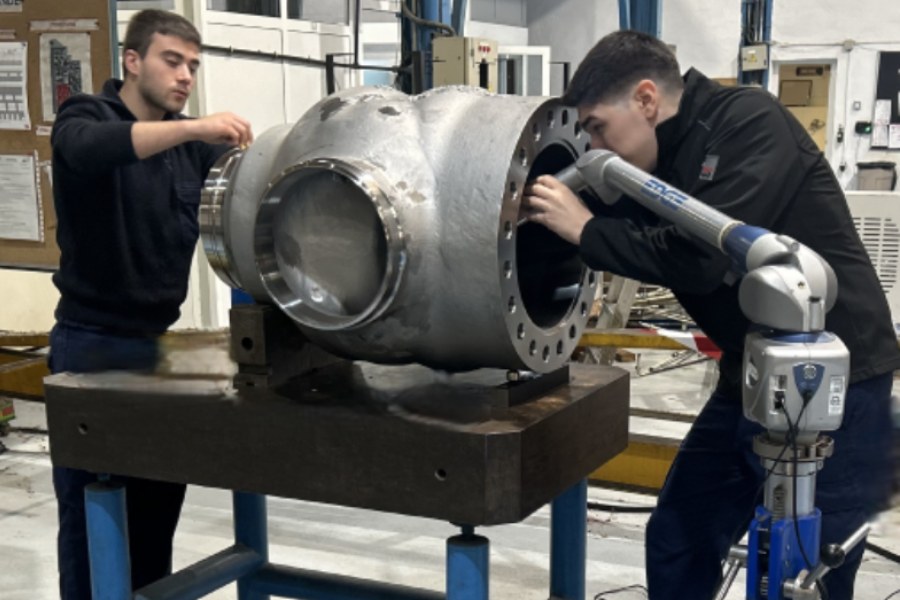
👉 Predictive maintenance doesn’t end at diagnosis. At Asimer Group, we intervene precisely when and where it matters—offering tailored technical solutions that avoid full component replacements.
Mechanical intervention capabilities in predictive maintenance
For predictive maintenance programs to be truly effective, detecting anomalies is not enough. You need the technical capability to act precisely on affected components, especially when dealing with industrial pumps and valves operating under critical conditions.
At Asimer Group, we apply advanced machining and welding techniques to recondition components with tight tolerances. We use specialized machinery to handle both single units and complex series.
Thanks to our Trevisan machining center, we can handle large-scale projects requiring substantial material removal, dimensional reliability, and perfect finishes. This technology is particularly valuable for large valve machining, where concentricity and flatness must be guaranteed.
We also use next-gen CNC machining tools, allowing intervention on bodies, covers, or casings with complex geometries—while maintaining precision, even with challenging materials like stainless steel.
Our experience also covers stainless steel pump and valve machining, using both turning and multi-axis milling techniques in controlled environments, with full dimensional tracking in the metrology lab.
When necessary, we combine these operations with specialized welding and surface recovery processes, including non-destructive tests tailored to each component’s geometry and working environment.
If a component shows signs of cavitation, thermal fatigue or localized erosion, we use material-removal CNC machining to recover critical zones while preserving the original functional tolerances—without replacing the entire part.
This approach goes beyond traditional maintenance—it’s a predictive model based on real intervention, designed to maximize asset lifespan without compromising system operability.
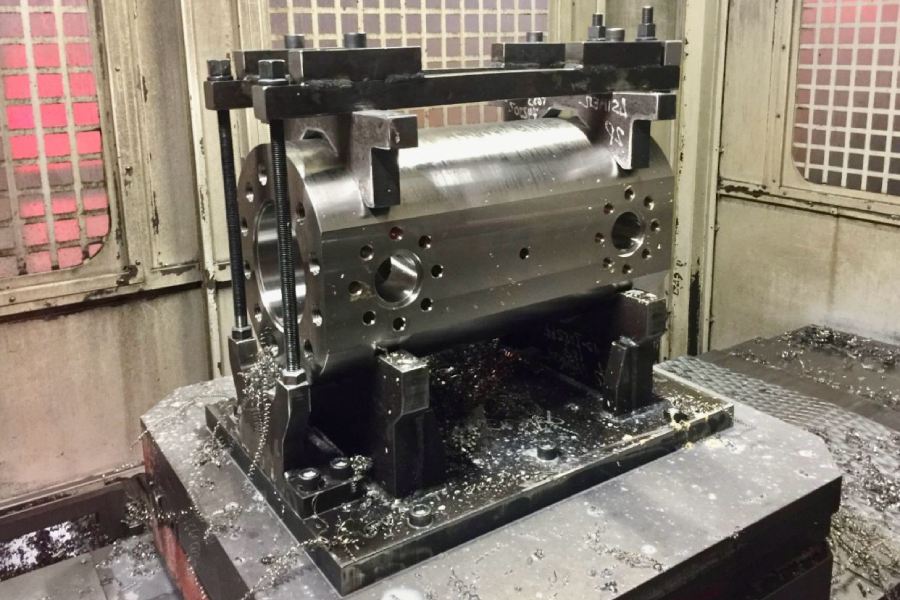
Key applications of predictive maintenance services
Predictive maintenance services are especially critical in industries with high operational demands, aggressive environments, and tight work cycles. As part of a comprehensive strategy, they don’t just prevent failures—they increase safety, efficiency, and equipment availability.
Each industry presents different challenges. That’s why the success of a predictive strategy depends on how well it adapts to the specifics of each operating environment.
Oil & gas
Predictive maintenance is essential for axial flow check valves and critical compressors, where pressure loss can jeopardize entire operations. The same applies to fittings used in Oil & Gas settings, where extreme conditions require high-reliability solutions and tight tolerances.
Water treatment and desalination
Early failure detection in centrifugal pumps handling abrasive or saline fluids is vital to prevent clogging and internal wear. These systems, in constant contact with solids or salt concentrations, need continuous monitoring and timely intervention.
Understanding centrifugal pump applications in these industries is crucial, particularly in relation to solid accumulation or salt crystallization.
Naval industry
In naval settings, valves and components face humidity, salinity, and variable mechanical loads. Predictive maintenance helps anticipate deformation, corrosion, and loss of tightness. In these cases, CNC machining, special materials, and certified welding procedures for corrosive environments ensure reliable performance—even in mission-critical scenarios.
Cryogenic applications
Operations at ultra-low temperatures demand maximum dimensional precision. Predictive maintenance in cryogenics focuses on tolerance control, sealing, and leak prevention in valves and pumps exposed to liquefied gases and other cryogenic fluids. These types of technologies also play a key role in demanding sectors such as aerospace, where cryogenics enables new levels of performance.
High-precision machining for cryogenic pump and valve applications ensures both functionality and safety in even the most demanding conditions.
Petrochemical
In this sector, precision and tightness are non-negotiable. Predictive maintenance applies to gate valves, diaphragm valves, or needle control valves, where even the smallest leak can trigger environmental, financial, or safety risks.
This applies to oil refining as well, where a single valve failure can halt processes and lead to million-dollar losses.
In all these sectors, predictive maintenance allows early intervention through precision machining or specialized welding in corrosive environments.
Thanks to these preventive actions, asset life is extended, replacement costs are reduced, and operational continuity is ensured in industries where reliability is not negotiable.
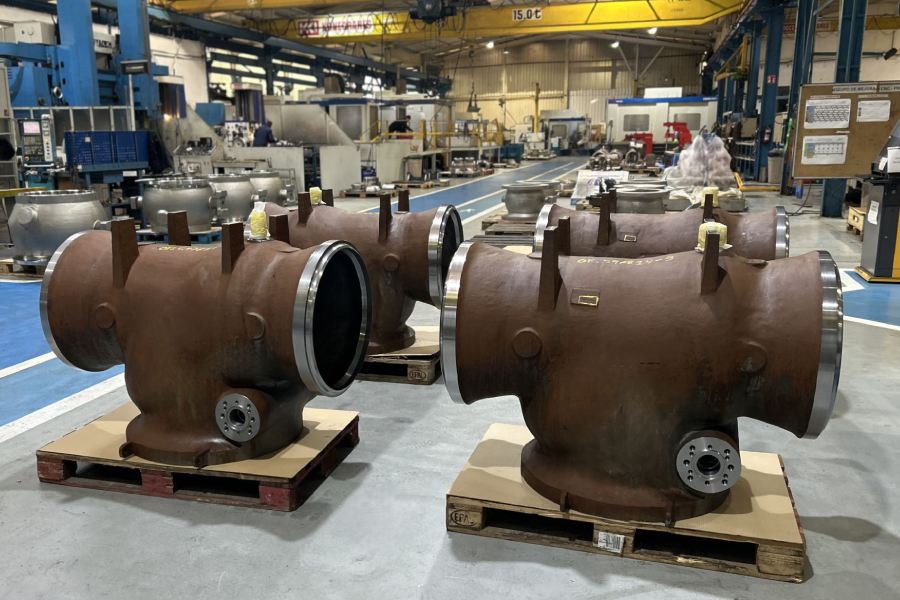
What should a provider of predictive maintenance with CNC machining offer?
Dashboards and sensors are not enough. What you need is a provider that can turn diagnosis into effective technical action, with guaranteed quality.
Evaluate whether your provider meets the following:
✅ High-precision CNC machining, even for unique parts
✅ Specialized welding with thermal control to prevent distortion
✅ Use of wear- and corrosion-resistant coatings (Stellite®, Inconel®, etc.)
✅ Full traceability with dimensional reports and documented quality control
✅ Proven experience in pump bodies, housings, covers, and large valves
🔧 At Asimer Group, we deliver all of this. Our technical focus and experience in critical sectors allow us to go beyond analysis: we provide real solutions that restore operability with confidence.
How do we work at Asimer Group on predictive projects?
From the very first contact, our approach is technical, thorough, and adapted to the real operating conditions of each client.
🔍 Initial analysis of the component and its service conditions.
📏 Dimensional verification and technical evaluation using advanced measurement instruments.
🛠 Application of CNC machining or TIG, automatic MIG, or PTA welding based on specific needs.
✅ Final quality control using portable arms, 3D verification, and documented traceability in our metrology. lab
We’ve worked on projects where the degradation of a valve or centrifugal pump put essential equipment at risk, with potential for unplanned downtime and significant operational losses.
Facing wear on critical industrial pumps or valves?
At Asimer Group, we intervene with precision before failure occurs.
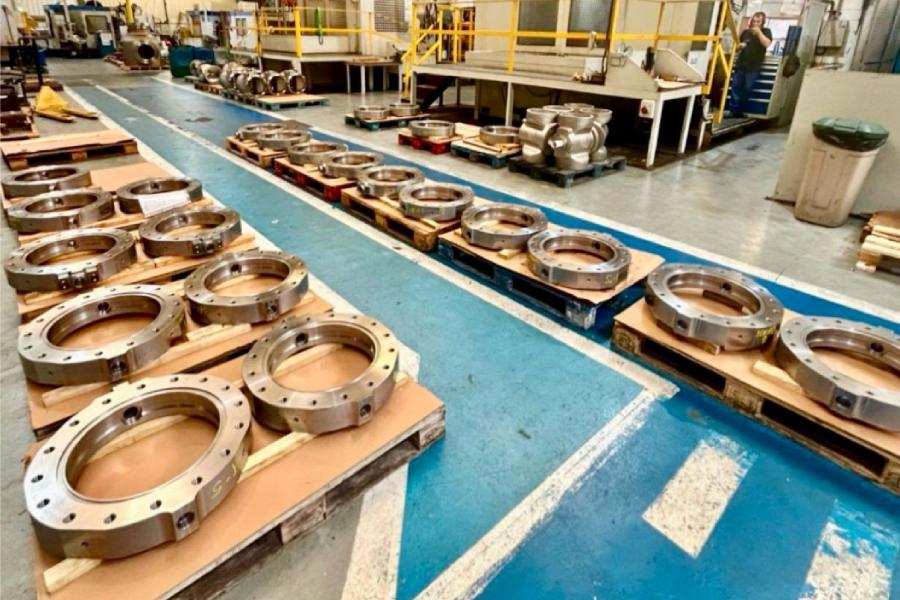
FAQ on predictive maintenance services for pumps and valves
What’s included in predictive industrial maintenance services?
They include diagnostics via sensors or NDT, advanced dimensional measurement, and—when necessary—intervention through CNC machining or specialized welding.
Can I contract these services for a single part?
Yes. At Asimer Group, we work with both series and one-off parts, especially when they involve critical tolerances or extreme operating conditions.
What’s the difference between preventive and predictive maintenance?
Preventive is done periodically, without knowing if intervention is needed. Predictive relies on real data (wear, vibration, temperature…) and only acts when objective signs of deterioration are detected.
How long does it take to intervene on a component?
It depends on the component type and damage level. However, by acting before failure, lead times are shorter than emergency repairs. Asimer Group offers optimized turnaround based on component criticality.
Which industries benefit most from these services?
Oil & Gas, cryogenics, desalination, naval, petrochemical, and water treatment. Any industry with critical equipment where failure comes at a high cost.
📌 Want to learn more about choosing between corrective, preventive, or predictive maintenance? We recommend reading:
Predictive vs corrective maintenance: Which strategy best reduces failures and costs in industrial components?

